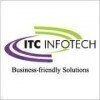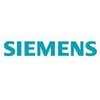Teamcenter Developer
Teamcenter Developer Interview Questions and Answers

Asked in Capgemini

Q. What are the various rules in BMIDE?
Various rules in bmide include naming rules, data type rules, relationship rules, and validation rules.
Naming rules ensure consistent naming conventions are followed for items in Teamcenter.
Data type rules define the type of data that can be stored in a particular attribute.
Relationship rules specify how different items are related to each other.
Validation rules validate data entered in attributes based on predefined criteria.

Asked in Wipro

Q. What ITK APIs have you used?
I have used itk APIs for developing custom functionalities in Teamcenter.
Used itk APIs for creating custom workflows
Utilized itk APIs for data manipulation and retrieval
Implemented itk APIs for integrating external systems with Teamcenter

Asked in Capgemini

Q. What are preferences?
Preferences in Teamcenter are user-specific settings that control the behavior and appearance of the application.
Preferences allow users to customize their experience in Teamcenter
They can control things like default views, colors, fonts, and layout
Preferences are stored in the database and can be shared across multiple sessions or devices

Asked in Wipro

Q. What is the difference between occurrence and revision?
Occurrence refers to a specific instance of an item, while revision refers to a change or update made to that item.
Occurrence is a specific instance of an item, such as a particular version of a document or part in a product assembly.
Revision is a change or update made to an item, which may result in a new version or iteration of that item.
In Teamcenter, occurrences are typically used to track different versions of a part or document, while revisions are used to manage change...read more

Asked in Wipro

Q. What are deployments in BMIDE?
Deployments in BMIDE are configurations of Teamcenter data model elements that can be exported and imported for reuse.
Deployments allow for consistent replication of data model configurations across different environments.
They can include business objects, properties, workflows, forms, and other data model elements.
Deployments can be exported from one Teamcenter environment and imported into another.
They help ensure consistency and standardization in data model configurations...read more

Asked in Capgemini

Q. What is command suppression?
Command suppression is a feature in Teamcenter that allows users to prevent certain commands from being executed.
Command suppression helps in controlling access to specific functionalities within Teamcenter.
Users can customize which commands are suppressed based on their requirements.
This feature can be useful in preventing accidental data modifications or deletions.
For example, a user can suppress the 'Delete' command to avoid accidental deletion of important data.
Teamcenter Developer Jobs




Asked in ITC Infotech

Q. What are the core concepts of the data model?
Data models in Teamcenter define how data is structured, stored, and accessed within the system.
Entities: Core components like Items, Documents, and Change Orders represent data.
Attributes: Properties of entities, such as name, description, and status.
Relationships: Connections between entities, e.g., a Document linked to an Item.
Data Types: Define the kind of data an attribute can hold, like string, integer, or date.
Inheritance: Allows entities to inherit attributes from par...read more

Asked in ITC Infotech

Q. 2. TC Upgrade Approach
The TC Upgrade Approach involves planning, testing, and executing upgrades to Teamcenter software.
Plan the upgrade process by identifying current system configuration and desired end state
Test the upgrade in a non-production environment to identify and resolve any issues
Execute the upgrade in a controlled manner to minimize downtime and ensure data integrity
Examples: upgrading from Teamcenter 10 to Teamcenter 12, upgrading from Teamcenter on-premise to Teamcenter cloud
Share interview questions and help millions of jobseekers 🌟


Asked in Capgemini

Q. What is a 150 BOM?
A 150 BOM refers to a Bill of Materials with 150 components.
A BOM is a list of components or parts needed to manufacture a product.
150 BOM indicates there are 150 unique components in the list.
Each component in the BOM may have details like part number, quantity, and description.
Interview Questions of Similar Designations
Interview Experiences of Popular Companies








Reviews
Interviews
Salaries
Users

















